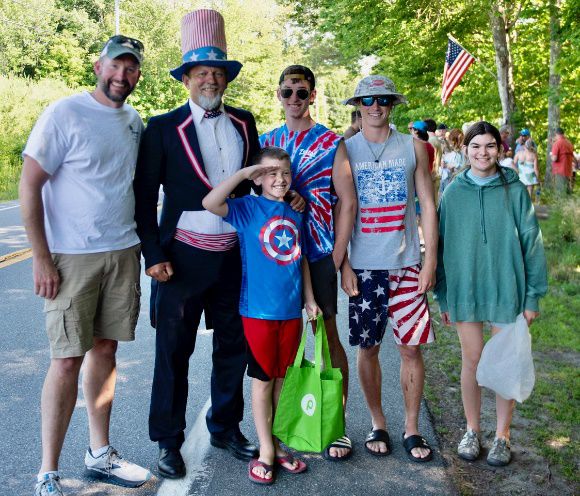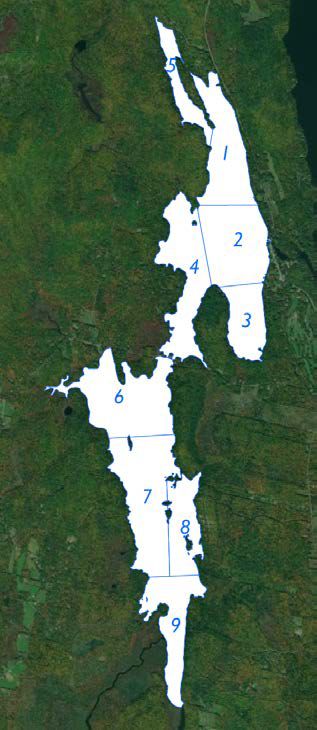
Counting Loons

The third Saturday in July is the annual loon count in Maine, coordinated by Maine Audubon. This year’s count took place on July 16. It was the 39th annual count in this important ongoing citizen-science project dedicated to better understanding one of Maine’s most iconic birds.
Every year over 1000 volunteers, of which I am one, attempt to count all the loons on over 300 Maine lakes at the same time. It’s organized like a military operation, and I am the coordinator for the dozen or so volunteers on Long Pond, which is divided into nine survey areas, with a tenth in Ingham Pond. Early in the morning all counters head for their assigned section of the lake to be in position to count all the adult loons and loon chicks in their area between 7:00 a.m. and 7:30 a.m.

I left my dock around 6 a.m., planning to fish for a bit before picking up my counting partners, Fred and Ann Knight, at their dock on the way to our survey area. I spoke to my neighbors, Jason and Sarah Toner, who were on their way to pick up Rose Talbot to count the loons in Beaver Cove. Rose is in her mid-nineties and has been counting the loons in her cove for decades. There were a few small clouds but with practically no wind, almost perfect conditions for spotting loons. As I headed down the lake, an eagle flew up the lake towards me. Suddenly, loons all over the lake were alerting the rest of the loons to the eagle’s presence. Loon parents began sequestering their chicks.
Our assigned area was a cove that has been used for many years by a pair of loons that typically nests on a secluded beach on a small peninsula. Recently, this pair has been unsuccessful in raising very many chicks, because land-based and avian predators have found the nest and eaten the loon eggs before they hatched.
Three years ago, the Belgrade Lakes Association (BLA), as part of their ongoing study of loons on Great and Long Pond (more information in Dick Greenan’s loon articles), built and installed a floating raft nest with an avian guard (to prevent predation by eagles, ravens, and blue herons). The nest was moored about 20 feet offshore from the usual nesting site to provide the loons some protection from terrestrial predators, such as racoons, minks, et al. When land-based predators have to cross water to reach the nest, the defensive advantage shifts strongly in the loons favor! For the third year in a row, the loons successfully used this nest and, as recently as a week ago, had been rearing a chick in the cove. Unfortunately on the morning of the count, there were no loons spotted in the cove, perhaps because of the eagle’s recent overflight.

As of press time, I had not received results from all of my counters but it appears likely that both adult and chick numbers are comparable to last year (2021 Long Pond, including Ingham: 45 adults, 4 chicks). I am a bit concerned about the chick numbers. At least 6 chicks have been reported in Long Pond, but recently at least three have been killed, one by an eagle and one by another loon.
Recently my friend, Dick Greenan had kids and grandkids in town for an old fashioned Fourth of July. After meeting Uncle Sam at the parade, they had lobsters next to the lake and watched the fireworks over the lake from a boat. Take advantage of the rest of the summer and get out on the lakes or hike or bike in the hills. And take a kid along. Or a parent or grandparent. You will be creating memories that will last. The 7 Lakes Alliance is hosting many interesting events, which are in the Community Calendar elsewhere in this paper. More info is available at the 7LA website. The Tuesday afternoon (3 p.m.) live animal talks from Chewonki are especially popular with kids.
Download Full Newspaper: High Res | Low Res (Details…)
<— Previous Article • Summaries • Next Issue —>
©2022 by Summertime in the Belgrades. All rights reserved.